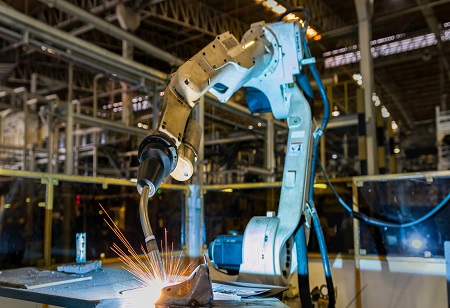There is a surge in demand for
robotic welding & manufacturing since the rise in reliance on industrial robotics is a proliferating trend as firms compete in order to stay competitive globally. As business dynamics change, businesses should out do bidders from across the globe. Cost, quality, efficiency as well as turnover time actually influence decision-making in business, and this leads manufacturers as well as welders to look for solutions as well as alternatives which enhance the efficiencies. Let us look at some of the important trends that are driving robotic welding technology.
Removing fixtures for optimized efficiency
Fabricators help in optimizing the efficiency on the production floor by using material handling robots into the weld cell and this removes the requirement for operators for loading & unloading fixtures during the
weld workflow & optimizes throughput by decreasing cycle times.
By automating these monotonous jobs, fabricators can help in decreasing costs & increasing safety in the factory. Operators need not have to attend all the welding operations, & you can decrease its exposure either to toxic gasses or to other hazards that are common in fabrication shops.
Automated Sensing for enhanced weld quality
Automated sensing technologies that enable
robotic welders for adapting operations as per the individual work piece dimensions helps in enhancing the quality of every weld while augmenting the speed of operations and consequently it renders for higher throughput.
Including these technologies into every weld cell helps in adjusting the weld robot's parameters automatically as per the work piece & monitoring the weld operation & record the details for continuous process optimization & seizes operations which falls outside of the benchmark parameters for enhanced quality & safety.
Laser sensing technologies are used to enable higher autonomy during the welding operations and the advances in this sector continue to maximize productivity while making sure the quality of every seam during the production process & the robotic welding system can send alerts to operators for addressing the issue if any work piece falls outside of the pre-defined tolerances.
Real-time data acquisition & analysis
The operational data acquisition as well as analysis of robotic welding systems are improving at a rapid speed coupled with automated sensing. Since every weld requires a proper inspection for passing the quality control process, these tools make it possible for validating the joint strength, weld penetration as well as the seal of every seam during the process of weld operation.
Integration with both upstream & downstream processes
Most often welding robots operate directly on a manufacturing line where the process is based on upstream quality checks as well as downstream inspections and modern robotics welding systems should be integrated with other information management systems for keeping the production line flowing at the needed rate for optimum productivity.
Operators can maximize efficiency & decrease defective welds for downstreaming the operations by incorporating the part transfer systems with the weld cells. Also, merging operational control systems with robotic weld systems permits you to increase throughput with accurate quality control for every work piece, save on time, materials as well as floor space in the facility & achieve a streamlined manufacturing process with automated transfers among work cells.
Improvements in Ease-Of-Use with Cobots
An important advance in robot welding technology is enhanced operational control & cost-efficiency leveraging cobots. Earlier, manufacturers had to hire programmers for setting up industrial robots & manage any transformation for the manufacturing parameters or even new software code. Other than needing skilled coders for working on the robots, a shift in the operational parameters has also helped in increasing downtime & reducing productivity.
 Magazine
Magazine
